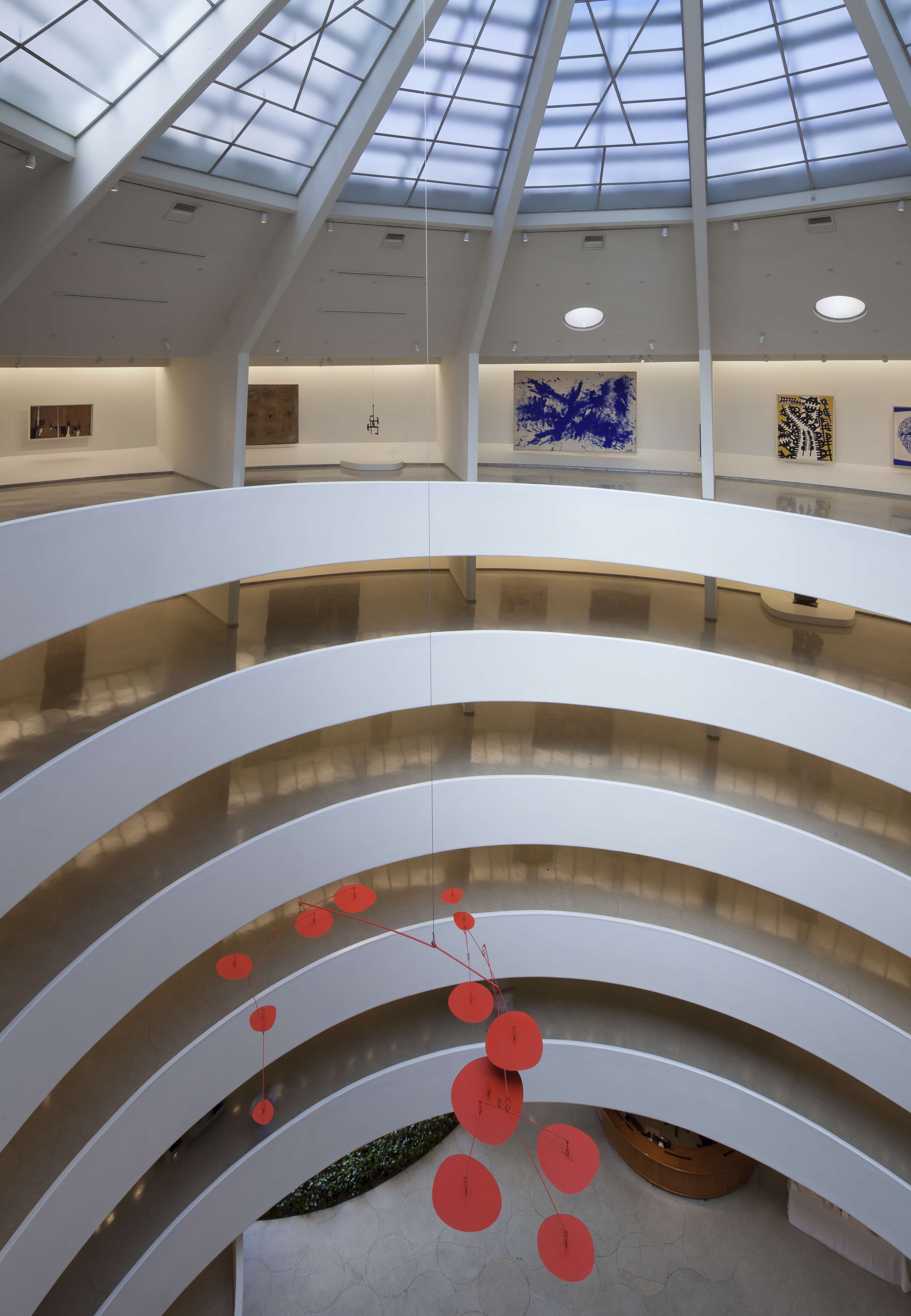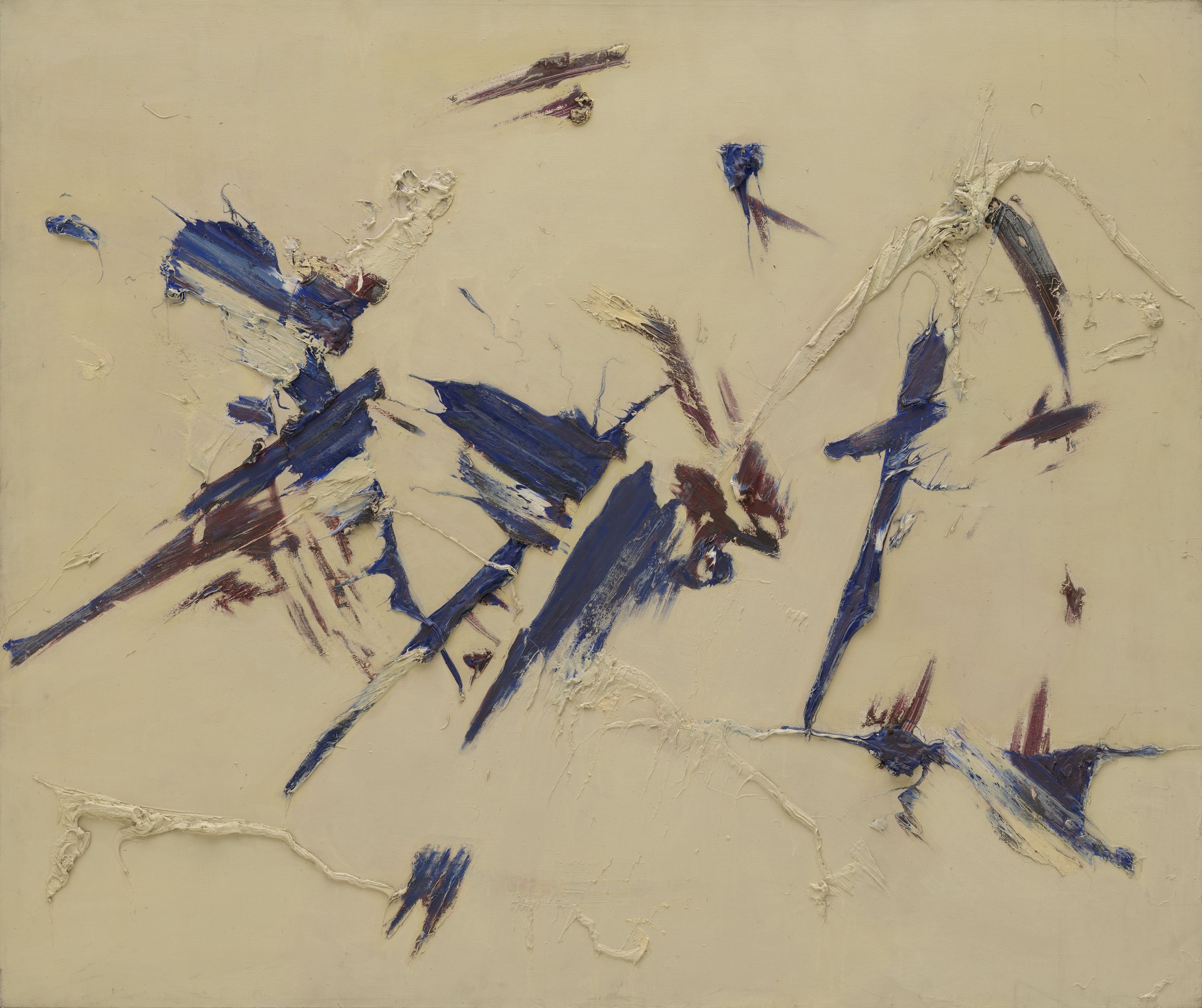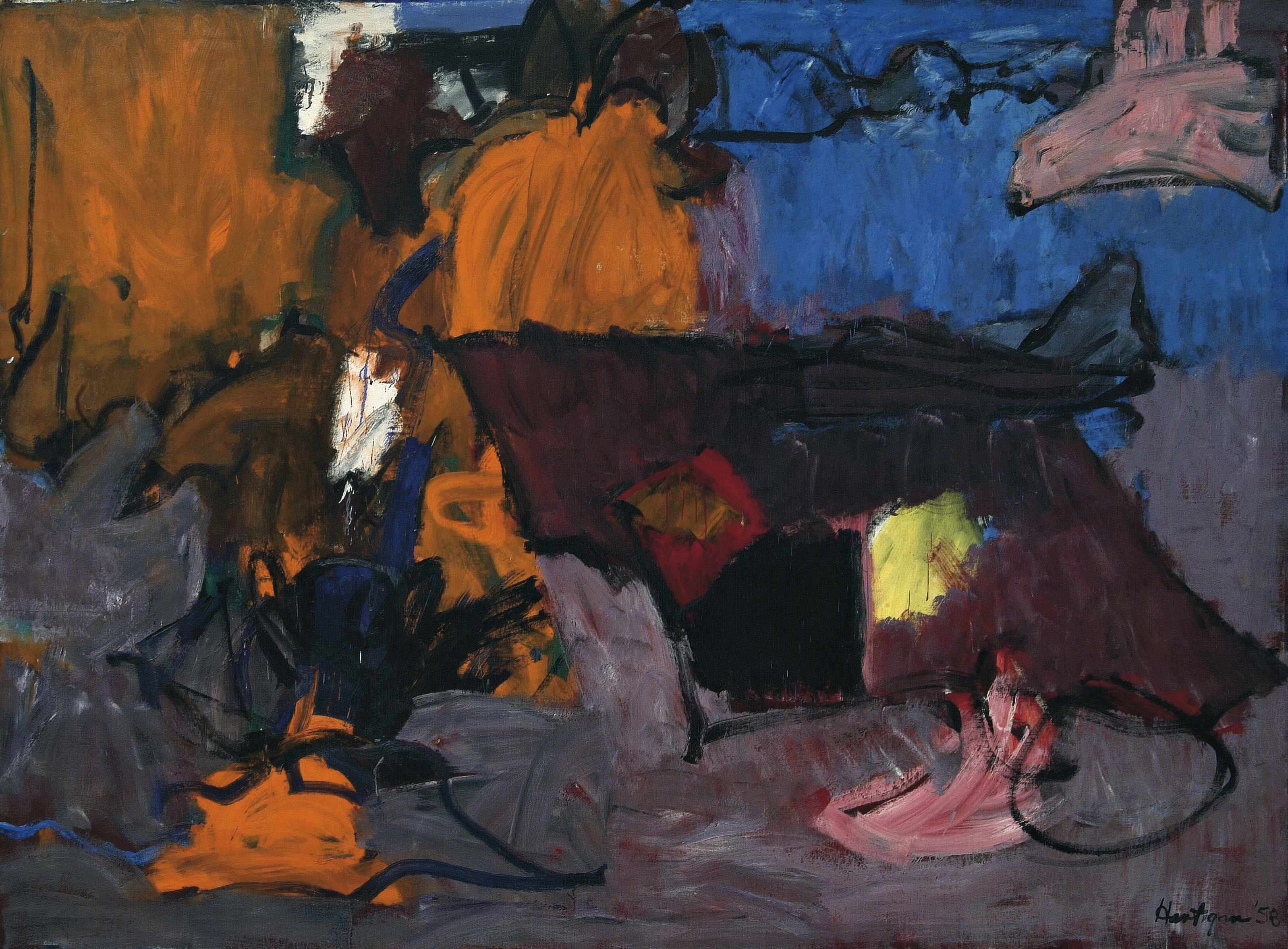

Installation view: "Art of Another Kind: International Abstraction and the Guggenheim, 1949-1960," Solomon R. Guggenheim Museum, June 8-September 12, 2012
Photo: David Heald © Solomon R. Guggenheim Foundation
For all their suffering and toil, the Abstractionists of the 1940s, '50s and '60s sure were making some pretty pictures. Some saw it then -- Frank O'Hara, most memorably, who was a painter's critic, if ever there was one. Others, of course, thought abstraction was the worst artistic development in the history of mankind, doodling by grown men and women. But visit the Guggenheim's "Art of Another Kind: International Abstraction and the Guggenheim, 1949 -- 1960" and all you will find are admirers, flocks and flocks of them. The young and the old alike, those that were born into their total worship and those who, in political terms, would be called flip-floppers, can't get enough of the suddenly classic and classical, inviolate and violating artists of that post-war era.
This past Tuesday, remembering O'Hara as much as the painters he loved, I brought a couple of quotes with me to the Guggenheim's crowd-pleasing block-bluster. All of them were from a characteristically mesmerizing article O'Hara wrote back in 1962, on the Guggenheim's Abstract Expressionists and Imagists exhibition:
"The Abstract Expressionist Movement is basically anti-museum in spirit."
"Abstract Expressionism is the art of serious men."
"Brilliant, uncomfortable works."
"Where else is the big, brave art happening?"
As great as O'Hara was, my visit to "Art of Another Kind" confirmed only half of one of those quotes -- they are evermore "brilliant... works."

Judit Reigl,
Outburst (Éclatement), 1956
Oil on canvas, 136 x 160 cm
Solomon R. Guggenheim Museum, New York
Gift of the artist in honor of Kálmán Makláry
© Judit Reigl
While "Art of Another Kind" begins in the most conventional way -- with an intimate, early Jackson Pollock -- the vitality of the show lies in its range. Not only do the pieces look right at home in the museum (they don't even looked tamed, for that matter), they are from all over the world. A beautiful painting by Yutaka Ohashi (born in Japan) gives the Rothko to its right a run for its money (and speeds past it); a recently purchased Judit Reigl (born in Hungary) has to be one of the most elegant of all; two sculptures by Jorge Oteiza (born in Spain) conclude the entire show! And that's only the beginning; the work on view is immensely international. "Art of Another Kind" has its holes -- and its obvious gender bias toward men (so maybe half of another O'Hara quote is true) -- but it succeeds in creating a more complex, widespread and dynamic picture of the groundbreaking period. And of the American painters represented here, several lesser-known artists get an equal chance to shine: Sam Francis' "Shining Back" and Grace Hartigan's "Ireland" are paintings you catch a glimpse of on your way up and paintings you just can't keep your eyes off of on your way down. Both are deliriously wild and poetic and are reason enough for retrospectives in this city.

Grace Hartigan,
Ireland, 1958,
Oil on canvas, 200 x 271 cm
The Solomon R. Guggenheim Foundation, Peggy Guggenheim Collection, Venice
© Grace Hartigan Estate
The chart-toppers are here, too. Franz Kline's "Large Blue Anthropometry (ANT 105)," one from his infamous blue body paintings (Kline would direct nude female models covered in paint to lie down on the canvas), is probably the show's largest piece and a perverse titan. Willem de Kooning, Clyfford Still, William Baziotes, Adolph Gottlieb, Ad Reinhardt (with his very yellow, "Yellow Painting") and Jean Dubuffet, join Mark Rothko and Jackson Pollock, as does my personal favorite, Cy Twombly. Many of these artists were responsible for producing and encouraging the "serious" and "uncomfortable" distinction, and, although they might have taken themselves very seriously, these paintings occupy all registers, from the flighty to the resounding, from the shrieking (see Elaine de Kooning's) to the most quiet. Needless to say, they are stellar.
I do have one warning for visitors of "Art of Another Kind": it's a very long show. The museum approximates that there are one hundred works on view, which isn't an unusual number, but these are towering works of art that will have you craning your neck and taking your time. It's best to come well-fed and energized, because getting to the top of the Guggenheim is something you will want to do -- the uppermost spiral tends to save the best for last. This one doesn't quite work that way, but there are some good surprises, I assure you.
In "Art of Another Kind"'s catalogue, Joan Marter takes on the place of sculpture within the show. Historically, as Marter will tell you, sculpture's relationship to this era has been tenuous at best and there are a fair amount of sculptures included in the Guggenheim's show. An Alexander Calder mobile, "Red Lily Pads," hangs from the rafters and, although it doesn't have too much business being in the show, it looks as wonderful as they all do (fun fact: you can find his mobiles in several American airports -- look out for an article of mine visiting them all). Robert Rauschenberg's half-painting, half-sculpture, "Red Painting," is also a bit of stretch but an energizing piece nonetheless. The Guggenheim makes its biggest attempt to welcome sculpture into the fold, however, in the gutsy decision to conclude the show with the aforementioned Jorge Oteiza sculptures. Despite how fascinating Oteiza's work is, it's ultimately an awkward move for "Art of Another Kind"; it doesn't quite feel fair to Oteiza or the show itself and as a result, it's more a whimper than a bang. Include Oteiza earlier and finish with one of the many great paintings Joan Mitchell produced in 1960 and you have yourself a better statement, easier to fulfill -- a female painter from the male-dominant era, lesser-known but just as magnetic, who would go on to explore the possibilities of abstraction for the rest of her career.
One of the most popular things to do right now in the discourse on abstraction is to rail against its most noted theorizer, Clement Greenberg. The gist of the criticism lies in the fact that Greenberg emphasized the formal breakthroughs of abstraction at the expense of its social and political ambitions. (In Marter's words, "[Greenberg] espoused formalism, while transforming himself into an a-political art-world personality.") In truth, the movement was both an artistic and political statement, and its emergence in the immediate post-WWII era was not a coincidence; I encourage you, however, to enjoy the paintings as naturally as you can. Precisely because they are abstract, they won't often give you specifics about "the atomic age," but hear what you will and don't listen too hard if what you hear is only a murmur.
The poet Henri Cole says that a poem can be measured in two ways: by its content (what it's about) and by its "symphony of language." What I love most about "Art of Another Kind" is the sheer "symphony of paint," lavish, running, boiling and sensitive. The colors. Unlike Cubism, which had many terrible forgers and very few true heirs, abstraction afforded the artists of "Art of Another Kind" seemingly limitless and genuine artistic possibilities. At the time, it was an explosive revolution in the arts; in its boldness and its defiance, it did seem "anti-museum in spirit." But its home in the museum is not its cage, it's where it was headed all along, and with "Art of Another Kind," it's where it continues to flourish in new and exhilarating ways.